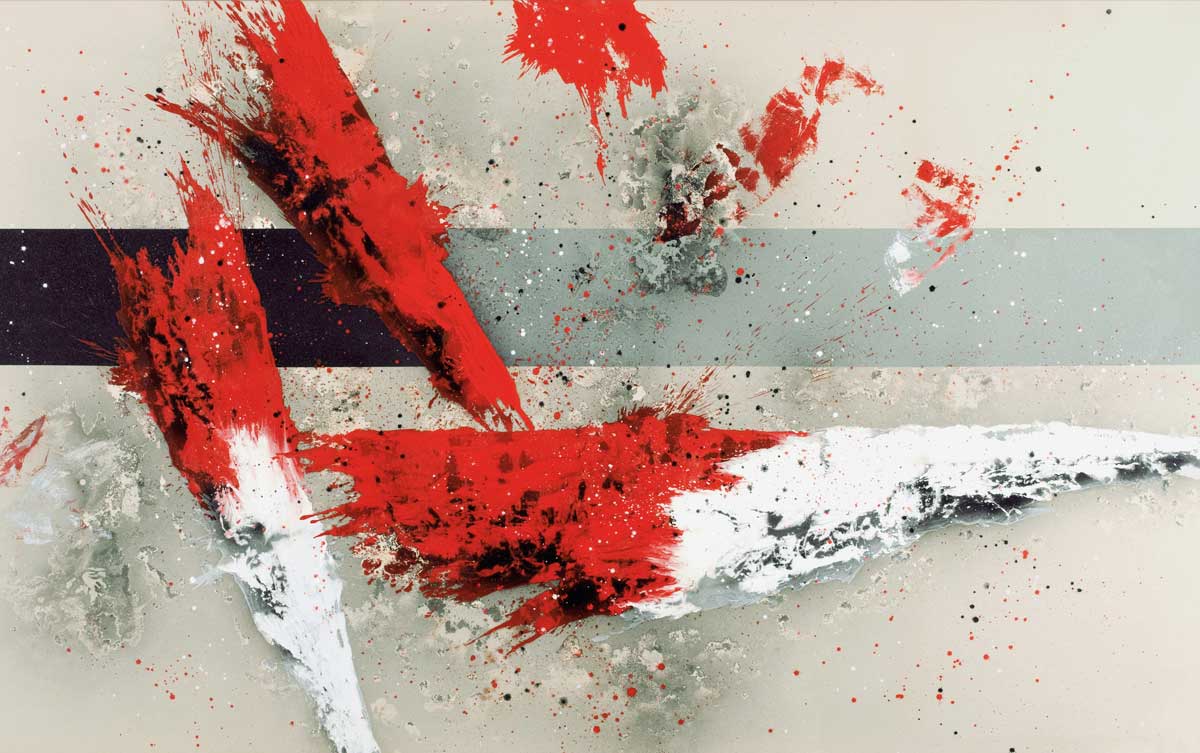
MASKS OF THE GLANCE
MASKS OF THE GLANCE (since 1995 until now)
Immersed in the A.D.A. (Automatic Deconstructive Abstraction) theoretical and conceptual platform, like all the other series up to 2005, Masks of the Glance (Máscaras de la Mirada) (1993-2012) is the most extensive and surely the most recognizable series within Ciria’s pictorial language. Since it was begun this group of work has influenced all the artist’s later investigations, at least at a formal level. Even though in previous series he had already clearly shown an interest in using liquid paint, texturing color, light and volume, it is in Masks of the Glance that Ciria’s painting becomes wholly identifiable and unmistakable. The series was a direct descendant of the previous series, titled Natural Encounters (Encuentros Naturales) from 1992-1994, and reached its mature form during the gestation period of the preparatory works for the Mnemosyne project (Paris, 1994). If in Natural Encounters the stains and painterly events remained on a secondary «internal» plane separated from the viewer by a rigid geometric structure, the formal difference between the two series is defined by how in Masks of the Glance the stains come to occupy the outside surface and put the geometric elements and compartments into a secondary role. In his own words, Ciria has indicated he has always had great interest in working with the two classical traditions of modernist abstraction, the geometric and the gestural, and the tensions of fusing both antithetical positions into a single plane. Given the longevity of Masks of the Glance, there have been numerous sub-series and suites undertaken over the years that have grown out of it, such as: Word Usage (El Uso de la Palabra) (1993), Memory and Vision (Memoria y Visión) (1993), Appropriations (Apropriaciones) (1995), Time Detained (El Tiempo Detenido) (Rome, 1996), The Perverse Garden I (El Jardín Perverso I) (1995-1996).
«The paintings’ supports, stepped on and stained by the echo of artistic activity, are recycled and valued because of their expressive immediacy. But, beyond that, they are valued because they exemplify the essence of the found object that contains a memory which, in this case, is intimately tied to the artist himself.»
Requiem (1997), Carmina Burana (1997-1998), Nexus (Nexos) (1998), Compartmentations (Compartimentaciones) (1999-2000), Buenos Aires (2000-2001), Comets (Cometas) (2001-2002), Psychopomps (Psicopompos) (2002), Geometric Venus (Venus Geométrica) (2003), Geometric Horde (Horda Geométrica) (2003), The Perverse Garden II (El Jardín Perverso II) (2003), Gilgamesh (2005).
